September 5, 2025
Travel with intention guided by the ʔiisaakPledge
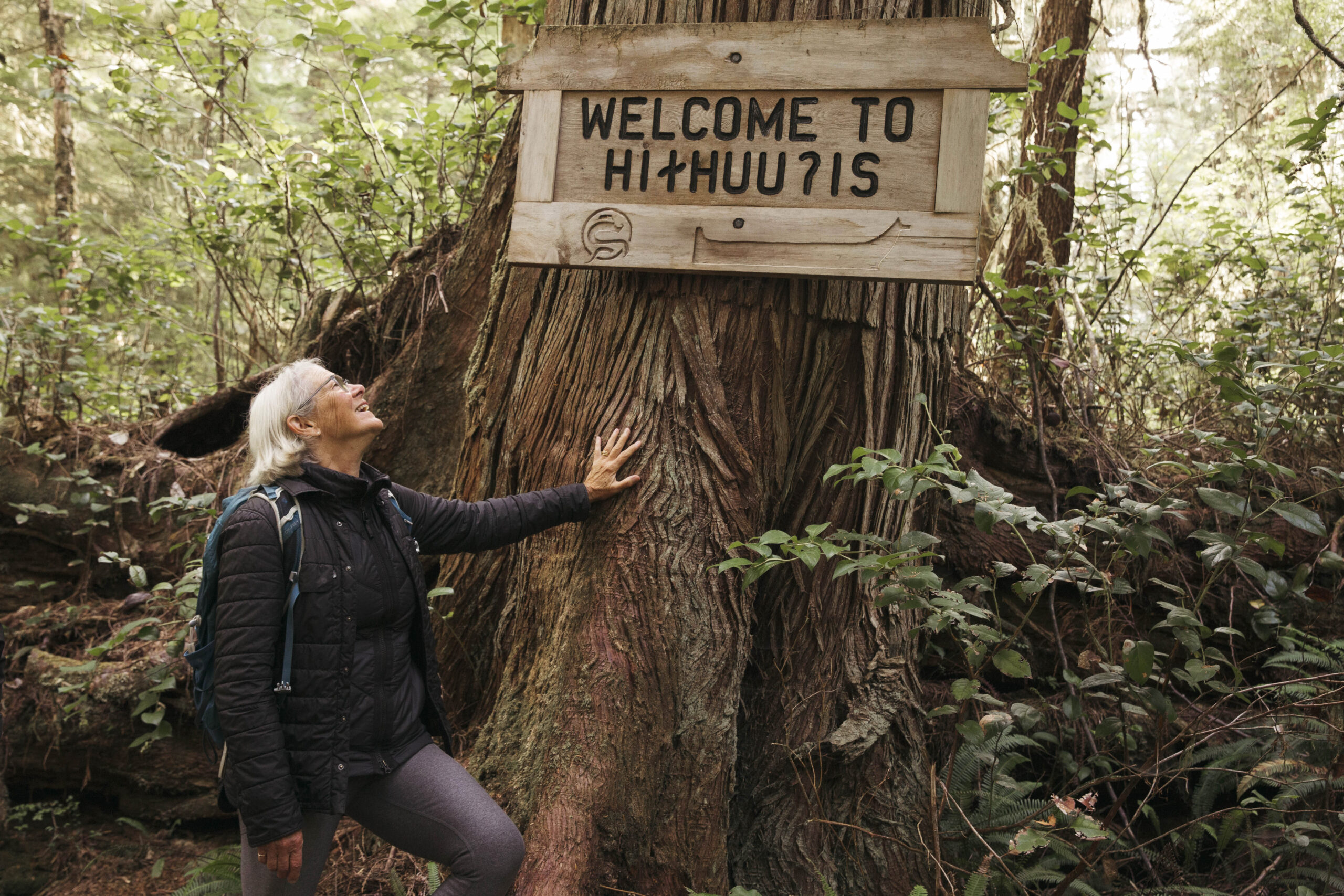
by Erin Linn McMullan.
On the cusp of seasonal change, September invites a shift in perspective and deeper reflection as you commit to transformative travel. Supporting regenerative Indigenous-led tourism and a continuity of Nuu-chah-nulth stewardship in Clayoquot Sound is evermore important in these days anticipating Orange Shirt Day and National Day for Truth and Reconciliation on the 30th. Visiting Načiks (Tofino) respectfully begins by taking the ʔiisaak (ii-saak) Pledge to help protect the incredible biodiversity of these ancestral lands and waters, the continued thriving of Indigenous culture, and build community.
There are four principles within the ʔiisaak Pledge. The first principle, ʔiisaaksinḥiʔin (ii-saak-sin-hi-in) asks that you be respectful of natural law, inviting you to be conscious of and strive for positive impact when you visit.

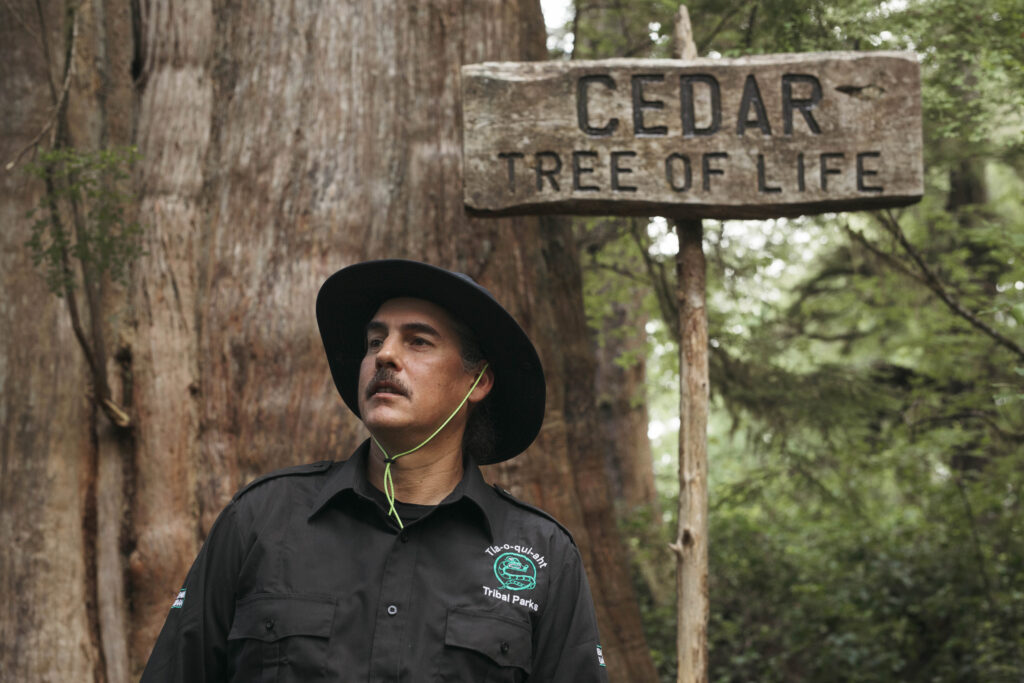
“When visiting Tla-o-qui-aht Tribal Parks, it is always a good start to take the opportunity to review the ʔiisaak Pledge,” says Saya Masso, Manager of Lands and Resources, Tla-o-qui-aht First Nation. “The pledge is a good way to learn how to access Tla-o-qui-aht Tribal Parks respectfully; following such protocols as not littering, stay on trails, dogs on leash, etc.”
“Furthermore, ethical travel via the Tribal Parks model, includes patronizing Tla-o-qui-aht Tribal Parks Allies’ businesses so that fiscal benefits are collected and contributed to the First Nation whose Tribal Parks are servicing the Region.”
When you stay at Tla-o-qui-aht owned Tin Wis Resort, an Original Original and Authentic Indigenous and Tsawaak RV Resort & Campground, both rooted in place and history within Tla-o-qui-aht Tribal Parks, you are already supporting capacity building. By choosing our Indigenous and Allied adventure partners onsite and off, you help to grow this stewardship circle[1] who share aligned values, and are ready to introduce you to all the west coast has to offer – connecting you with Nature, an appreciation of culture, and insight into a deeper relationship with the Pacific Ocean, temperate rainforest, and coastal marine life.
This first principle includes protecting biodiversity by respecting animals’ privacy. Wildlife photographer and documentarian Sam Rose Phillips reminds us to first consider the risks of your close encounter.

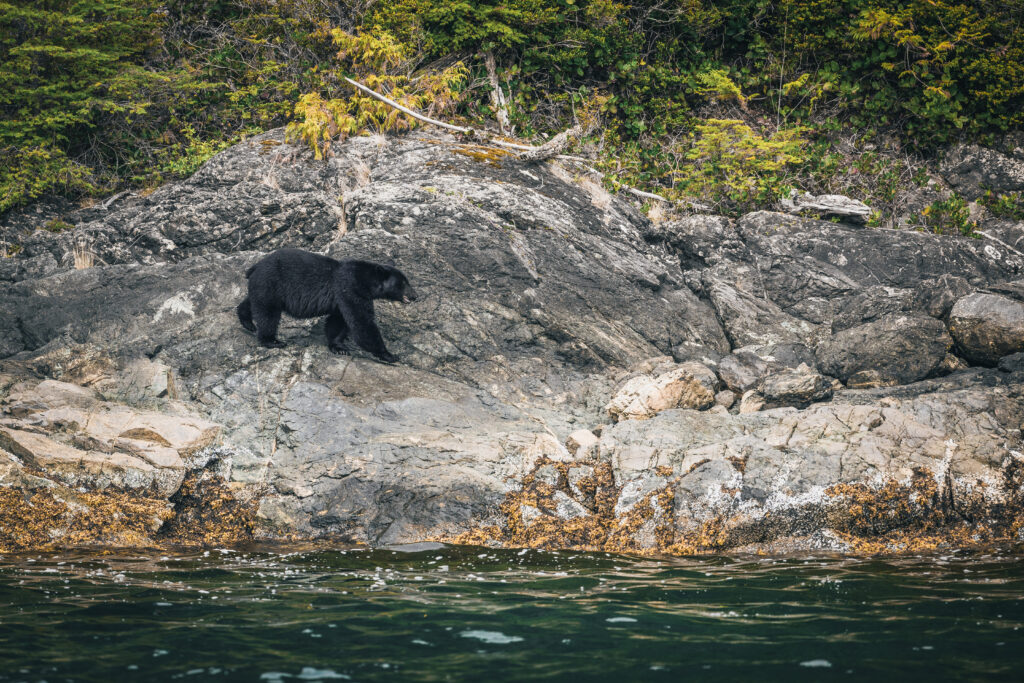
“I’m grateful for the guidance shared with me from friends and knowledge holders from Ahousaht, Toquaht, Yuułuʔiłʔatḥ, and Tla-o-qui-aht Nations, who have shaped and deepened my responsibilities towards wolves in ways I could have never imagined,” says Sam Rose Phillips. “It’s incredibly meaningful to learn how to live among wolves in lands whose guardians have held them as sacred for thousands of years. As a filmmaker guided by ethics, Nuu-chah-nulth ways of respecting wolves (and all beings) have instilled my journey with a growing understanding of how to honour wolves without causing harm.”
The second, taaquqḥłiʔin (taa-quuqh-thi-in), urges that you “Acknowledge Indigenous rights and title throughout the territory and conduct yourself as a guest.”
An essential step in decolonization is in acknowledging that Nuu-chah-nulth Peoples have stewarded this place since time immemorial and that it is not a wilderness but wałyuu (home). This process, driven by Indigenous-led advocacy, is reflected in the collaboration, since 1995, between Parks Canada and the nine Nuu-chah-nulth nations whose haaḥuułi are encompassed by the co-managed Pacific Rim National Park Reserve, by Ahousaht taking over management of Mux̣šiƛa Hot Springs (formerly Maquinna Park) at Nism̓aakqin from BC Parks in 2017, and in an historic agreement last year in 2024 between Tla-o-qui-aht and Ahousaht First Nations and the BC government to protect 76,000 hectares in Clayoquot Sound through Indigenous-led conservancies.
This second principle also asks that you support revitalization of language.
In David A. Robertson’s 52 Ways to Reconcile: How to Walk with Indigenous Peoples on the Path to Healing, language is a frequent touchstone. One of the ways you can begin to know this place is by learning local place names on the Klahowya! Story map – named for a Chinook greeting used in coastal trade. With efforts towards revitalization, the Nuu-chah-nulth language has come alive from interpretive signage in the Pacific Rim National Park Reserve and on local trails like Tonquin, to labels in the aisles of Co-Op Grocery Store.
Notice also the beautiful histories carried by č̓iinuł (totem poles) from Tiičswina, We Survived! (2013) facing the beach at Tin Wis to Joe David’s č̓iinuł (2018) downtown, to a series by brothers Hjalmer Wenstob and Timmy Masso along Hwy 4, including a pair of T̓iick̓in (Thunderbird) at Wally Creek (2022) and atop Kennedy Hill (2024) as well as a qʷayac̓iik (wolf) (2024) at the Kennedy River rest stop.

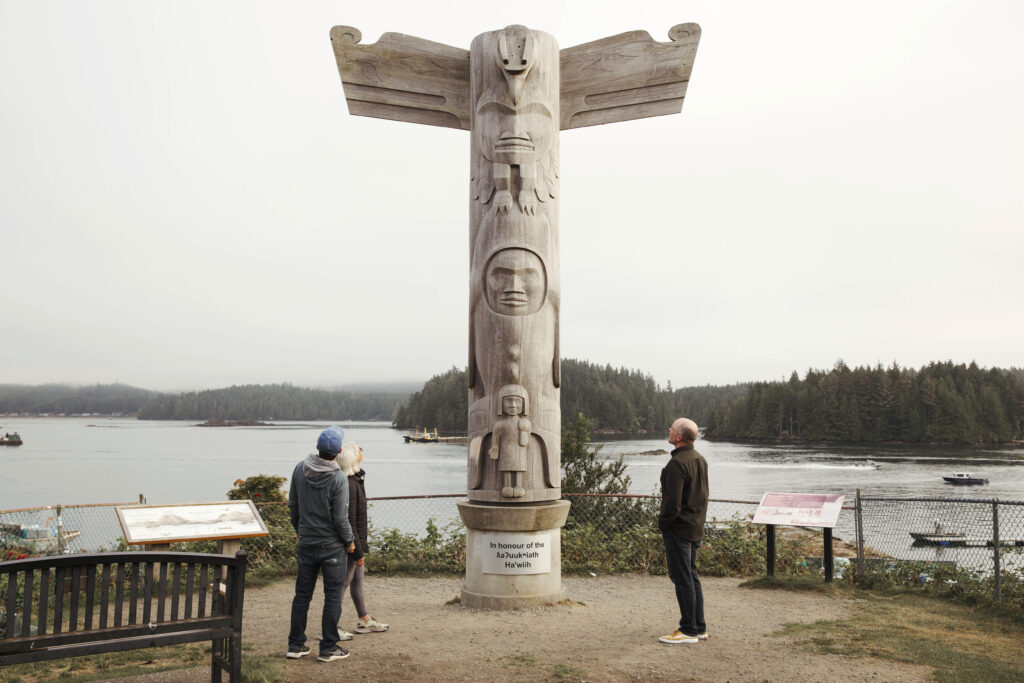
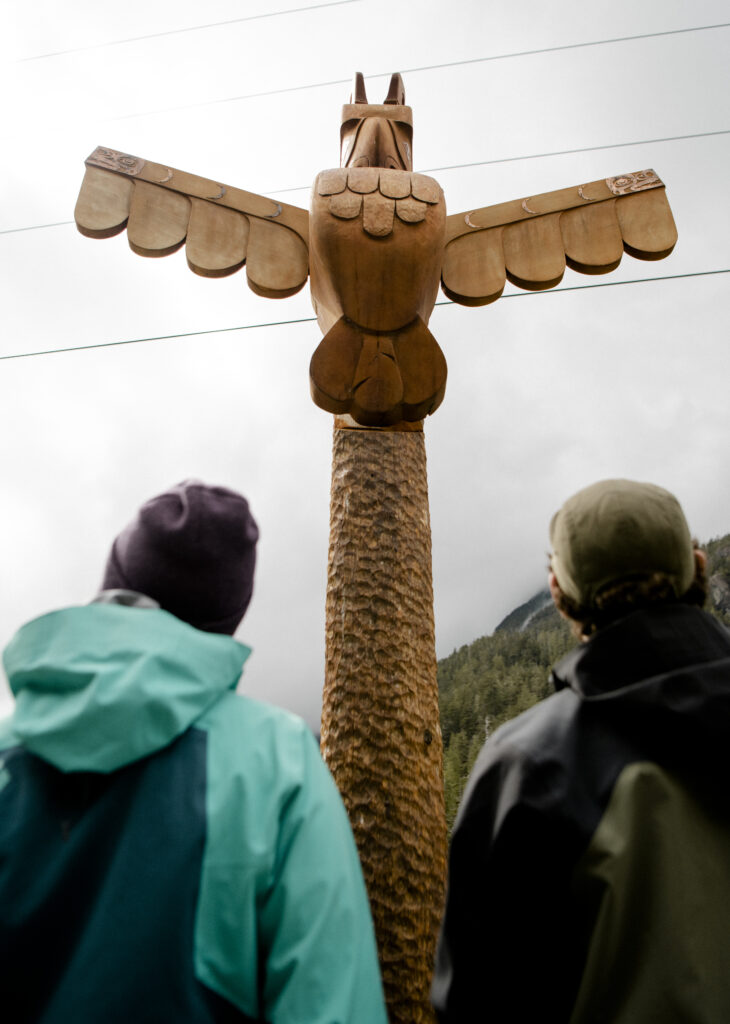
The third principle, łaayiksinḥiʔin (thlaa-yak-siin-hi-in) asks you to be generous and helpful because “there is no end to the work of building community.” When you’re enjoying a beach stroll it’s easy to do a 5-minute beach clean then simply drop off any marine debris to the recycling station at the Tofino Visitor Centre. Learn more Here.
The fourth principle, Qʷaasiinḥapin (Qwaa-siin-hap-in) instructs that we leave healthy habitats undisturbed for future generations. At the beginning of summer 2025, Vancouver Island’s west coast citizens united urging people to camp only at authorized campsites such as Tsawaak RV Resort & Campground and within the co-managed Pacific Rim National Park Reserve at Green Point, the Broken Group, and the West Coast Trail to help protect the backcountry across Nuu-chah-nulth territories.
In the joint press release, Superintendent Dave Tovell pointed out, “Parks Canada works closely with local First Nations, the Districts of Tofino and Ucluelet, as well as local tourism organizations to ensure a memorable, safe, and respectful visit. Guardians, Junior Guardians, Beach-Keepers, Coastal Stewards and Parks Canada staff work together to encourage and promote appropriate visitor behaviour.”
“Tla-o-qui-aht Tribal Parks are a continuation of Indigenous cultural lifeways and the practice of ʔiisaak (To observe, appreciate and act accordingly) in the haaḥuułi of the ƛaʔuukʷiʔatḥ/Tla-o-qui-aht ḥaw̓iiḥ. Nuučaanuł/Nuu-chah-nulth families have diligently cared for these ancestral land and sea gardens over thousands of years,” Gisele Maria Martin points out. “The benefits of that intergenerational work is in the biodiversity and beauty of this place. It needs continued care and protection for current generations to enjoy, and more importantly, for future generations of life to survive and thrive.”
Whether you’re visiting Načiks or traveling across the province, download the Indigenous Tourism BC app to learn more about each region, visit heritage sites and events, and listen to words and phrases, songs and stories.
[1] p. 23, “Principle #5, Practice stewardship with an ongoing field of co-creation”, A Regenerative Approach to Tourism in Canada, Destination Canada.
